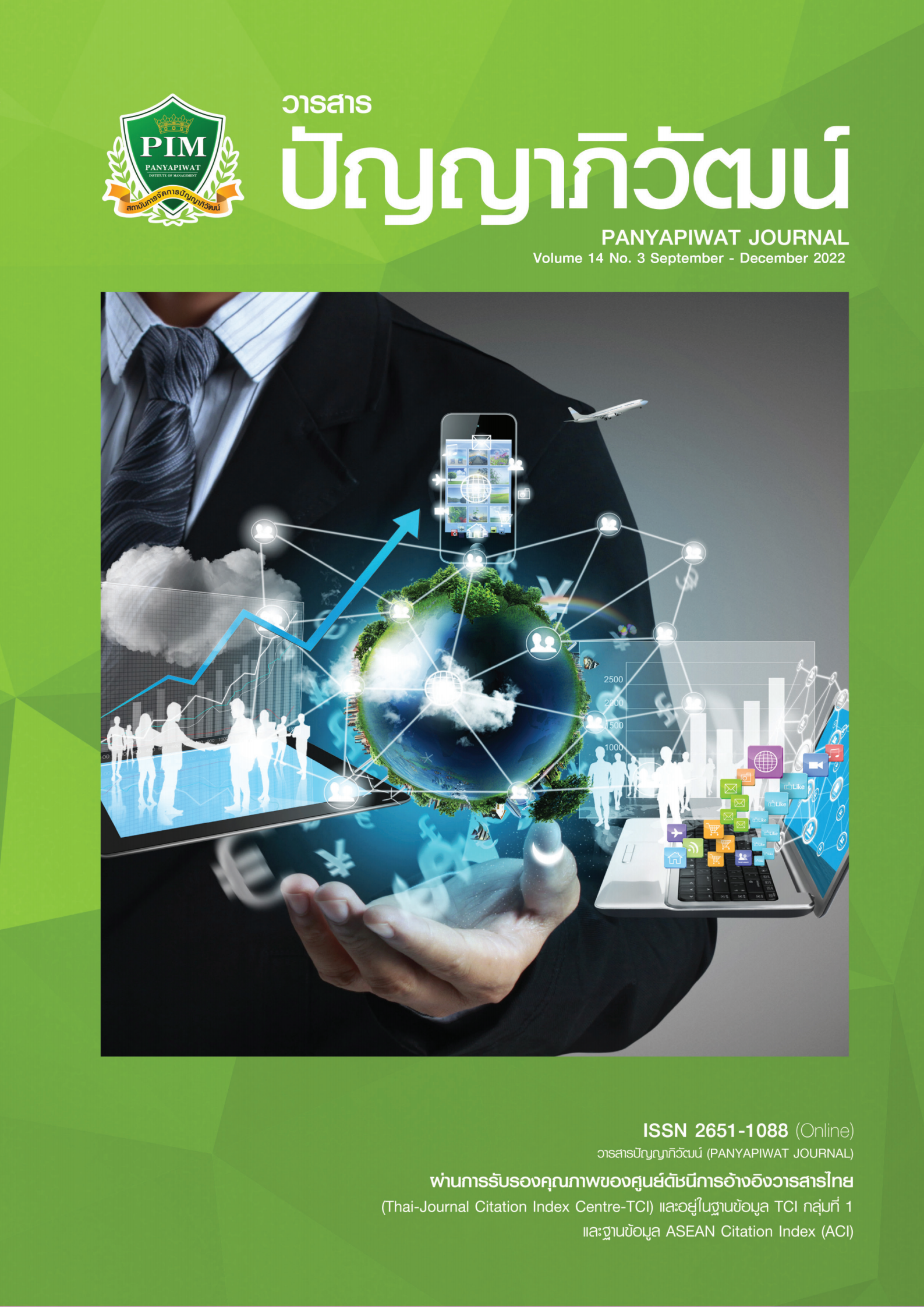การสร้างความทันสมัยในวิถีญี่ปุ่น “ก่อนเข้าสู่สมัยเมจิ”
Main Article Content
บทคัดย่อ
บทความชิ้นนี้มีจุดประสงค์เพื่อจะมองย้อนไปในอดีตก่อนสมัยเมจิว่า ญี่ปุ่นมีการสร้างความทันสมัยให้แก่ชาติอย่างไร โดยรวบรวมและประมวลข้อมูลจากเอกสาร บทความ และหนังสือที่เกี่ยวข้องจากข้อมูลที่ประมวลได้ การสร้างความทันสมัยในวิถีญี่ปุ่นแบ่งเป็น 2 ช่วง คือ ช่วงแรก ญี่ปุ่นสมัยโบราณ-ญี่ปุ่นปิดประเทศญี่ปุ่นรับและเลียนแบบวัฒนธรรมจากจีนและเกาหลี ที่สำคัญคือ ตัวอักษรลัทธิขงจื๊อและศาสนาพุทธ โดยใช้
วิธีเลือกและปรับเปลี่ยนสิ่งที่รับมาผสมผสานกับวัฒนธรรมดั้งเดิมของตนเอง ทำให้สิ่งที่รับเข้ามากลายเป็นวัฒนธรรมที่มีลักษณะเฉพาะของญี่ปุ่นโดยปริยาย ช่วงที่ 2 ญี่ปุ่นปิดประเทศ–สิ้นสุดสมัยเอโดะ ด้วยวิถีของผู้ใฝ่รู้ มีมานะอดทน เพื่อความก้าวหน้าของตนเองและสังคม คนญี่ปุ่นสนใจเรียนรู้วิทยาการและความก้าวหน้าของชาติตะวันตกจาก “ดัตซ์ศึกษา” และเดินทางไปศึกษาหาประสบการณ์ยังต่างประเทศ วิธีการดังกล่าว
ช่วยเปิดโลกทัศน์และความรู้ใหม่ในสังคม และเป็นต้นทุนสำคัญของการปฏิรูปสมัยเมจิ ทำให้ญี่ปุ่นก้าวเข้าสู่ความเป็นรัฐสมัยใหม่ได้เร็วและไกลกว่าชาติอื่น ๆ ในเอเชีย
Article Details

อนุญาตภายใต้เงื่อนไข Creative Commons Attribution-NonCommercial-NoDerivatives 4.0 International License.
“ข้าพเจ้าและผู้เขียนร่วม (ถ้ามี) ขอรับรองว่า บทความที่เสนอมานี้ยังไม่เคยได้รับการตีพิมพ์และไม่ได้อยู่ระหว่างกระบวนการพิจารณาลงตีพิมพ์ในวารสารหรือแหล่งเผยแพร่อื่นใด ข้าพเจ้าและผู้เขียนร่วมยอมรับหลักเกณฑ์การพิจารณาต้นฉบับ ทั้งยินยอมให้กองบรรณาธิการมีสิทธิ์พิจารณาและตรวจแก้ต้นฉบับได้ตามที่เห็นสมควร พร้อมนี้ขอมอบลิขสิทธิ์บทความที่ได้รับการตีพิมพ์ให้แก่สถาบันการจัดการปัญญาภิวัฒน์หากมีการฟ้องร้องเรื่องการละเมิดลิขสิทธิ์เกี่ยวกับภาพ กราฟ ข้อความส่วนใดส่วนหนึ่งและ/หรือข้อคิดเห็นที่ปรากฏในบทความข้าพเจ้าและผู้เขียนร่วมยินยอมรับผิดชอบแต่เพียงฝ่ายเดียว”
เอกสารอ้างอิง
Ariga, K. (1964). Modernization and Tradition. Departmental bulletin paper, Keio University
Graduate School of Human Relations, (4), 1-9. [in Japanese]
Assumption University. (2022). Philosophy of confucius. http://www.ci.au.edu/th/index.php/
about/2015-08-24-11-58-20 [in Thai]
Chokmukuda, W. (2013). Japanese history (3rd ed.). Gypsy Group Co Ltd. [in Thai]
Duke, B. C. (2009). The history of modern Japanese education: Constructing the national school
system, 1872-1890. Rutgers University Press.
Embassy of Japan in Thailand. (2014). Japanese history. https://www.th.emb- japan.go.jp/itpr_th/
history.html [in Thai]
Ericson, M. D. (1979). The bakufu looks abroad. The 1865 mission to France. Monumenta Nipponica, 34(4), 383-407. http://www.jstor.org/stable/2384102
Ikegami, A., & Kanada, H. (2012). Digital daijisen. Shogakukan. https://dictionary.goo.ne.jp/
word/%E8%BF%91%E4%BB%A3%E5%8C%96/#jn-59471 [in Japanese]
Jansen, M. B. (1983). Japan and its world [Japan and its world]. Kledthai Publishing. [in Thai]
Kagoshima Prefecture Kagoshima Prefecture Tourism Federation. (2022). Statue of satsuma
young group. https://www.kagoshima-kankou.com/guide/11361 [in Japanese]
Kamontrakun, W. (1994). Enjoy Japanese. Nanmeebooks Co., Ltd. [in Thai]
Kanjanomai, P. (1991). Knowledge of Japanese history (Japanese Nation Building with Buddhist,
Shinto and Confucian Ideologies). Thai–Japanese Studies, 8(2), 32-51. https://so02.tci-thaijo.org/index.php/japanese/article/view/52296/43372 [in Thai]
Kanjanomai, P. (1990). Transformation of confucianism into Japanese confucianism. Thammasat
Journal of Japanese Studies, 7(2), 94-106. https://so02.tci-thaijo.org/index.php/japanese/
article/view/52397/43456 [in Thai]
Library of Congress. (2018). Students studying in the Netherlands at the end of the edo period.
https://www.wdl.org/en/item/7379/
Lin, S. (2003). Why is China following Japan? https://www.rieti.go.jp/users/china-tr/jp/030616ntyu.
html [in Japanese]
Methapisit, T. (2019). Japanese linguistics. Phimdee Co., Ltd. [in Thai]
Morioka, K., & Tokugawa, M. (2012). Japanese dictionary (3rd ed.). Shueisha. [in Japanese]
National Diet Library. (2009). Japan–Netherlands exchange in the edo period. https://www.ndl.
go.jp/nichiran/e/s2/s2_2.html
Saito, H., & Lee, E., (2013). Chronicles of Japan [Chronicles of Japan] (2nd ed.). Sri Panya. [in Thai]
Satsuma Students Museum. (2022). The History of the satsuma students. http://ssmuseum.jp/
contents/en/history/
Silapawattanatham. (2021). Sima Qian: Chinese historian who recorded 3000 years of China’s history, castrated as a eunuch. https://www.silpa-mag.com/history/article_60927 [in Thai]
Varasir, P. (2021). Roles of the Dutch in Japan during the period of isolation (1639-1853).
Humanities & Social Sciences, 38(1), 221-243. https://so01.tci-thaijo.org/index.php/
HUSO/article/view/242663/167056 [in Thai]
Wat Nyanavesakavan. (2007-2021). Buddhism in Japan. https://www.watnyanaves.net/en/
book-reading/289/4 [in Thai]
Yamaguchi. (2022). The roots of the imperial family. Exploring the history of the Japanese and
the emperor. https://ka-ju.co.jp/column/roots-of-japanese-emperor/ [in Japanese]
Yung, Y. (2008). Chinese and Japanese-past, present, future. https://scholar.google.com/
scholar?hl=en&as_sdt=0%2C5&q=%E4%B8%AD%E5%9B%BD%E4%BA%BA%E3%81%
A8%E6%97%A5%E6%9C%AC%E4%BA%BA-%E9%81%8E%E5%8E%BB%E3%83%BB%
E7%8F%BE%E5%9C%A8%E3%83%BB%E6%9C%AA%E6%9D%A5&btnG= [in Japanese]


